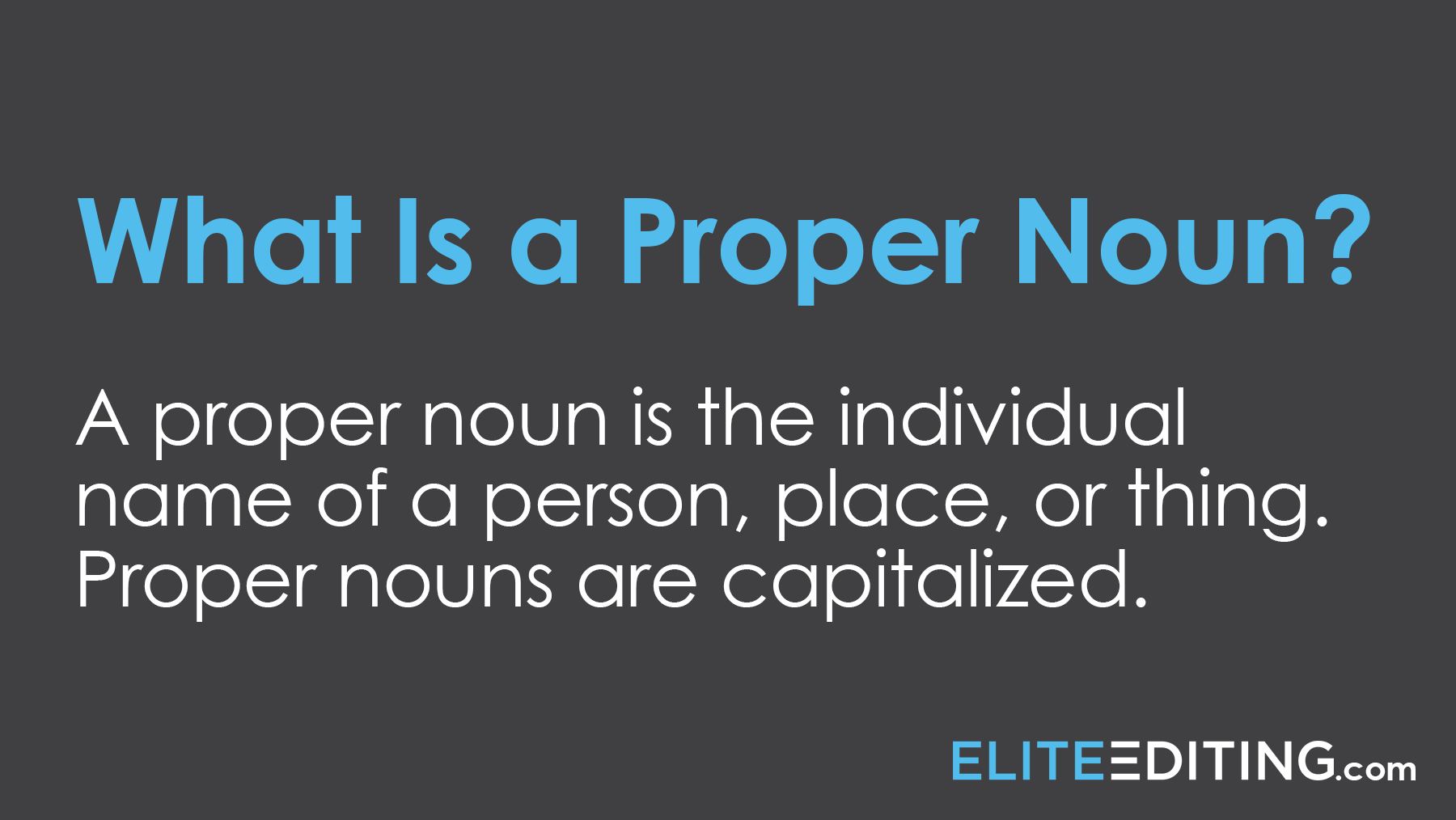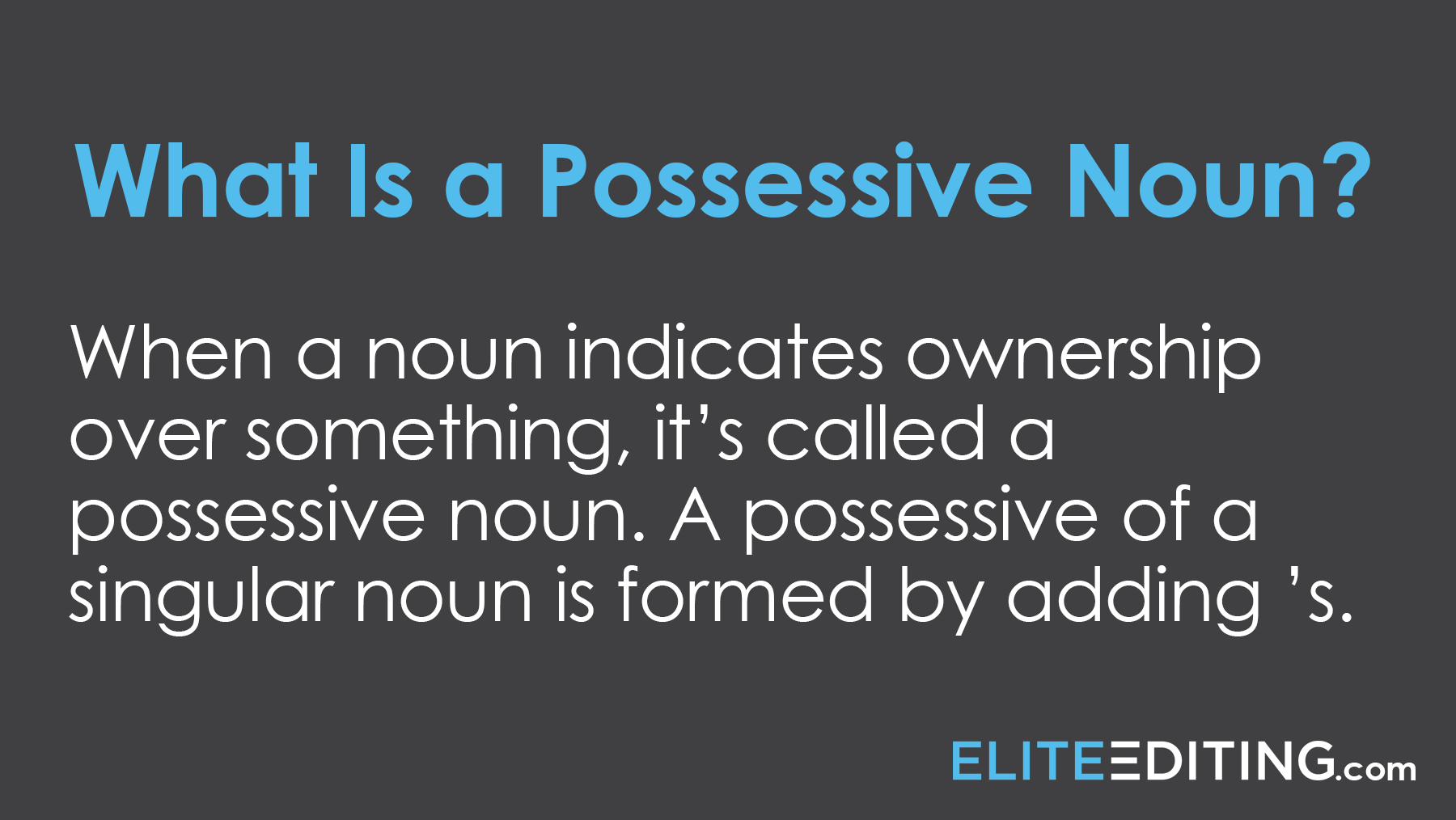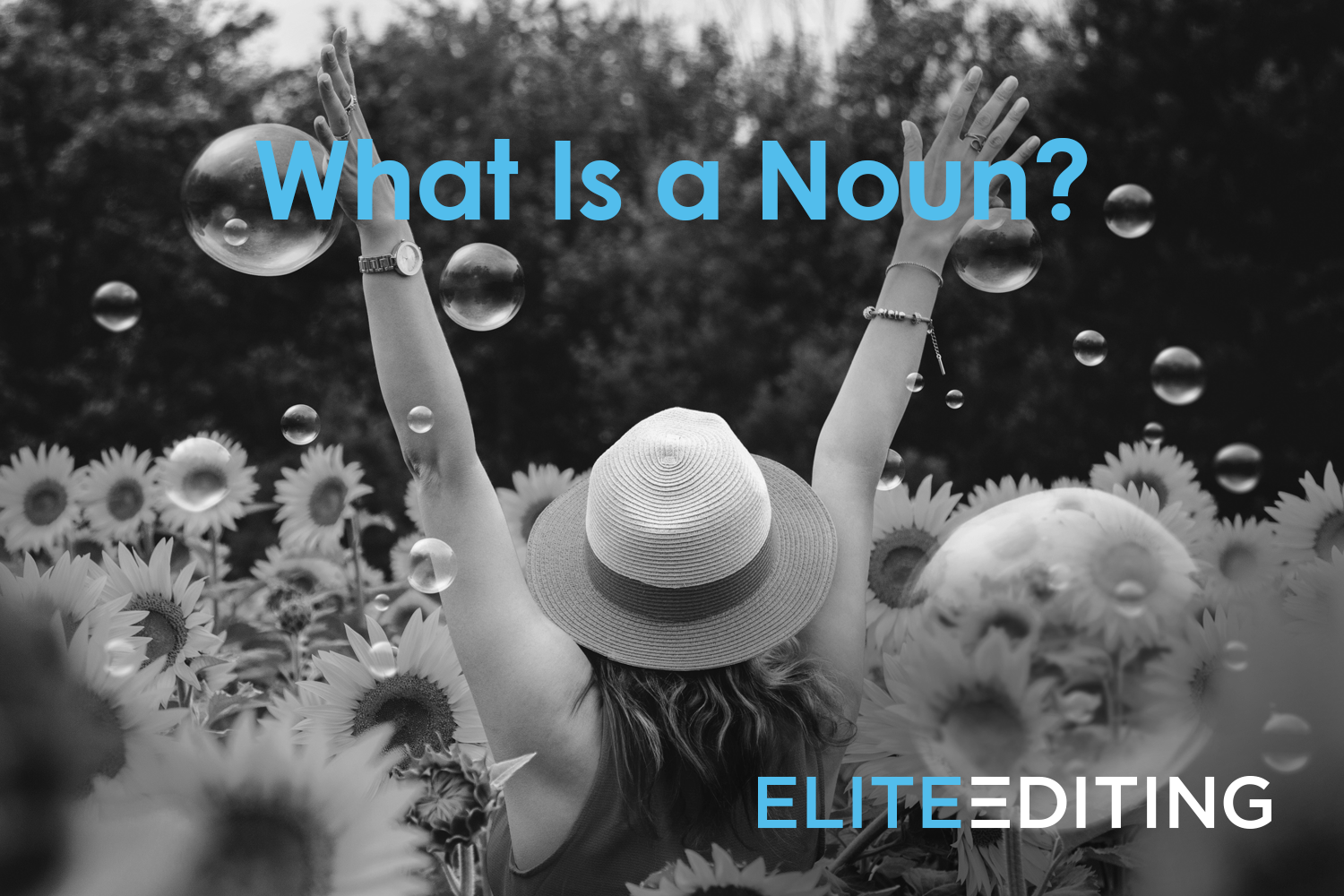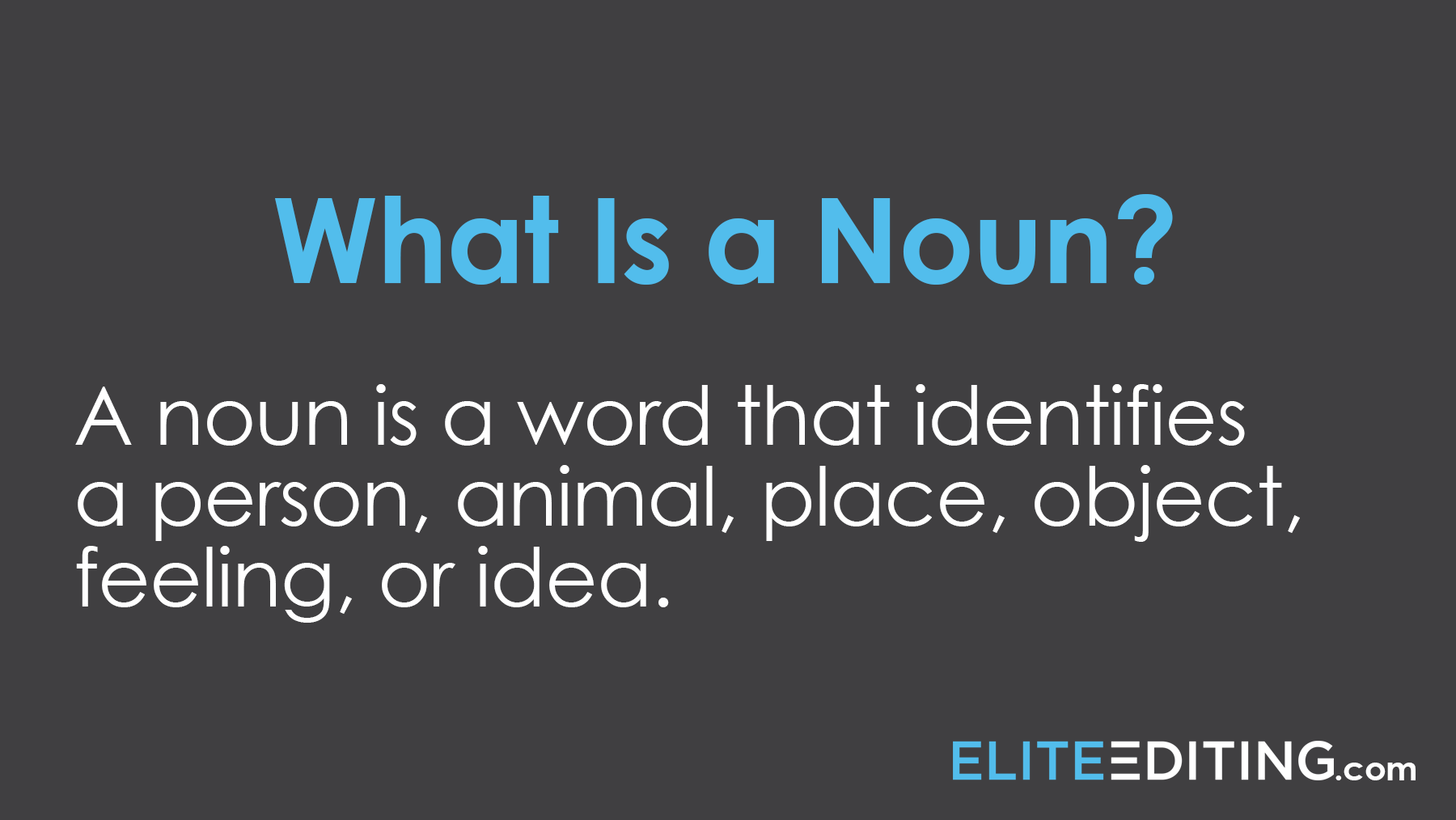If you’re asking yourself, “What is a noun?,” you’re wrestling with one of the fundamentals of grammar. A noun is arguably the most essential part of speech because it allows us to refer to specific people, objects, or ideas by name. Everything in the world is represented by at least one noun, and by referring to this noun, we can make sure we all know which person, place, or thing we’re talking about. For this reason, nouns are often called naming words.
In this post, we’ll walk through the definition of a noun, the different types of nouns, and how to tell the difference between trickier noun forms that often confuse people, such as possessive nouns and nouns vs. pronouns.
What Are Nouns?
So what are nouns? A noun is a word that identifies a person, animal, place, object, feeling, or idea. Nouns can be plural or singular, proper or common, abstract or concrete, compound, collective, or verbal. Understanding how nouns function in a sentence is the first step to effective writing.
Think you can now confidently answer the question, “What is a noun?” Not so fast—this is where it gets complicated.
Types of Nouns
The two most basic types of nouns are proper and common nouns. A common noun is a general name for a person, place, object, or idea. A proper noun is a personal name for a specific person, place, object, or idea. The distinguishing feature of proper and common nouns is that proper nouns are capitalized and common nouns are lowercased.
Proper Nouns
Rather than a reference to a type or general idea of something, a proper noun is the individual name of that person, place, or thing. Proper nouns are capitalized.
- The little girl’s name is Sally.
In this example, “girl” is a common noun because it refers to a type of person, and “Sally” is a proper noun because it’s a personal name indicating which specific girl we’re talking about.
- Yellowstone is a national park in the United States.
In this example, “national park” is a common noun because it refers to a type of place, and “Yellowstone” and “United States” are both proper nouns because they’re the names of specific places.

Common Nouns
Common nouns are usually lowercased because they refer to things generally rather than specifically. There are many types of common nouns; we’ll talk about those types next.
Abstract nouns
If you’re talking about something that’s an idea that can’t be physically experienced with your five senses, you’re using an abstract noun. This includes things like emotions, qualities, concepts, and ideals. Here are some examples of abstract nouns:
- Happiness
- Beauty
- Truth
- Loyalty
- Curiosity
- Talent
Concrete nouns
If you’re referring to something that’s tangible, visible, or otherwise able to be experienced by your physical senses, you’re using a concrete noun. This includes things like people, animals, places, objects, sounds, and smells.
- dog
- city
- book
- pie
- clang
- fragrance
Compound nouns
Compound nouns are nouns or noun phrases formed by combining two or more words to create a new noun that’s more specific than an individual noun would be but not so specific that it becomes a proper noun. For example, the noun “bedroom” denotes which type of room in a house we’re talking about, but it’s lowercased because it’s still a type of room and not the individual name of a room. Here are other examples of compound nouns:
- greenhouse
- haircut
- public speaking
- police officer
Collective nouns
A collective noun is a noun that refers to a group of individuals or things rather than a single individual or item. Collective nouns can be confusing, because while a collective noun denotes a group, it’s generally used singularly; the trick is determining whether the individuals in the group are acting individually or as a unit.
- My family is coming to visit. (Not “My family are coming to visit.”)
- My team is the best in the district. (Not “My team are the best.”)
- The herd was running down the hill. (Not “The herd were running down the hill.”)
- This pile of laundry is in the way. (Not “This pile of laundry are in the way.”)
Here’s an example of a collective noun that can be used singularly or plurally depending on how the group is acting:
- The audience showed its appreciation. (This is singular, because the audience shares the same appreciation and therefore acts as a unit.)
- The audience are waving their flags. (This is plural, because each member of the audience holds his or her own flag.)
Verbal nouns
A verbal noun is a noun formed from a word that’s usually a verb. A verbal noun is often (but not always) formed by adding a suffix to a verb.
- departure
- attack
- decision
- laughing
Gerunds
Gerunds are very similar to verbal nouns because they’re also verbs used as nouns. However, gerunds are distinct from verbal nouns in the following ways: gerunds always end in -ing, but verbal nouns can end in different suffixes; gerunds are never plural, but verbal nouns can be plural; gerunds can take direct objects, but verbal nouns can’t; gerunds can’t be modified by adjectives, but verbal nouns can.
Here are some examples of gerunds versus verbal nouns:
- Gerund: Building houses is my job.
- Verbal noun: The city is full of buildings.
- Gerund: Carly likes writing complex sentences.
- Verbal noun: Carly’s dense writing is difficult to read.
Plural Nouns
Plural nouns are similar to collective nouns in that they also refer to more than one individual or object, but where these two types of nouns differ is how they’re used: a collective noun is often used singularly, but a plural noun is always used plurally.
A plural noun can be either countable or noncountable, meaning we either can count the number of individuals or items in the group, or we can’t. The easiest way to tell whether a plural noun is countable or noncountable is whether you can use a number with it.
- Joe ate five cookies.
In this example, because we can count how many cookies Joe ate, “cookies” is a countable noun.
- Jane used butter in the cookie recipe.
In this example, because “butter” isn’t made up of individual parts (so it doesn’t make sense to say how many “butters” Jane used to make the cookies), “butter” is a noncountable noun. Noncountable nouns are sometimes referred to as mass nouns.
Possessive Nouns
When a noun indicates ownership over something, it’s called a possessive noun. A possessive of a singular noun is formed by adding ’s.
- Rex’s toy
A possessive of a plural noun is formed by adding an apostrophe.
- Birds’ wings
s’ or s’s
A common confusion regarding possessive nouns is whether a possessive singular noun ending in s should end with s’ or s’s. A singular noun is always made possessive by adding ’s, even if the noun already ends in s (or ch or z) or is a proper name:
- Incorrect: Chris’ car
- Correct: Chris’s car
S’ denotes possession only with plural nouns, so when determining whether s’ or s’s is correct, ask yourself whether the noun is singular or plural, and follow the guidelines above.

Nouns vs. Pronouns
So we’ve covered the question, “What are nouns?,” but what about nouns’ counterparts, also known as pronouns?
A pronoun is a word used in place of a noun so that the noun doesn’t have to be repeated more than once in a sentence. Just like nouns, pronouns can be singular, plural, and possessive.
- The dog chased its tail.
In this example, “its” is a possessive pronoun used in place of “the dog.”
- Josephine said she wanted to wear her favorite shoes to school.
In this example, both “she” and “her” are pronouns used in place of the proper noun “Josephine.”
Here are some other common nouns vs. pronouns:
- Jake—he, him, his
- Sam and I—we, us, our
- Harry and Jenny—them, they, theirs
Conclusion
With these tips for identifying all the various types of nouns and their proper usages, you have all you need to know to understand and use nouns effectively. Next time you hear someone ask, “What is a noun?,” you’ll know exactly what to say!
Like this post? Check out this article on verbs and adverbs, and this one on compound words.
Resources:
http://pediaa.com/difference-between-gerund-and-verbal-noun/










